18 Types of Palm Trees in Florida (With Pictures)
-

- Last updated:
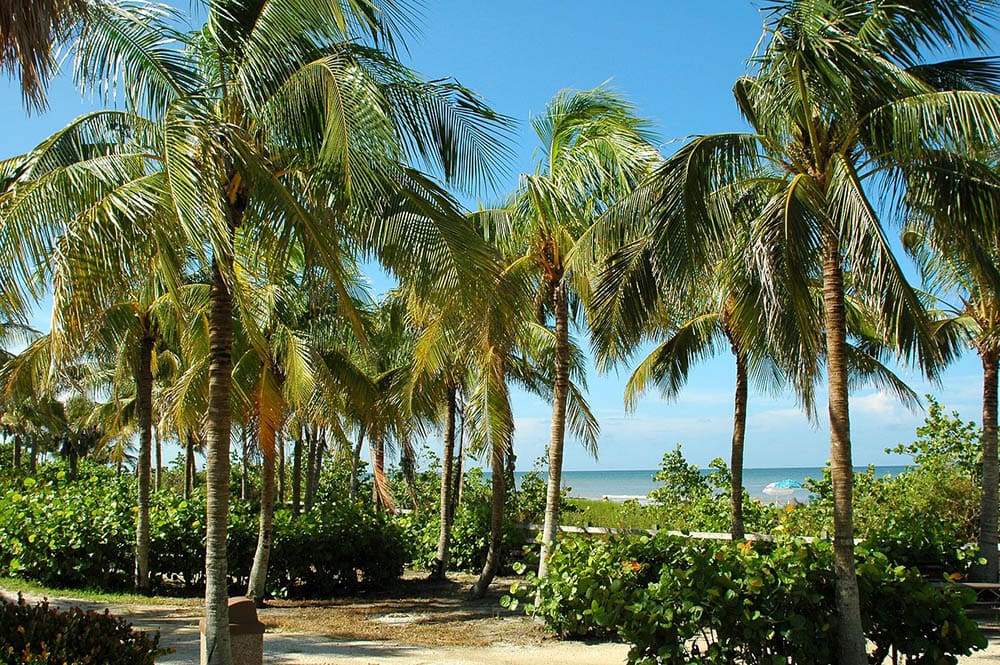
Florida experiences tropical to subtropical climate with plenty of rainfall throughout the year. This type of weather is ideal for the majority of palm trees.
The Sunshine State is home to at least 12 native species of palm trees, with several others introduced from other places—Africa, Australia, South Asia, and South America.
Florida’s love for the palm tree started in 1868, as a palm tree is proudly displayed on the state seal. The palm on the state seal was changed from a cocoa palm to a sabal palm after adopting the sabal palm as a state symbol.
The species of palm trees in the state are very diverse and easy to distinguish if you take time to study the trunk, leaves, and height. This article can help you learn more about the 18 types of palm trees in Florida.
The 18 Types of Palm Trees in Florida
1. Sabal Palm (Sabal palmetto)

The sabal palm, also known as the cabbage palm, is the most widely distributed palm tree in Florida. The palm is native to the state and some Caribbean nations, such as Cuba and the Bahamas.
It can grow in almost all soil types, growing in either a sun-scorched prairie and a dark, flooded swamp. A cabbage palmetto is one of the hardiest palm, surviving salt, hurricanes, freezing temperatures, and drought while remaining disease-free.
The tree has a tan or brown trunk with a “boot” leftover leaf base that gets smooth and light brownish at the top. The frond has a defined midrib that extends into the blade with 3 to 4 feet long leaves. It can grow up to 65 feet and is used for food, medicine, and landscaping.
2. Cocoa Palm (Cocos nucifera)
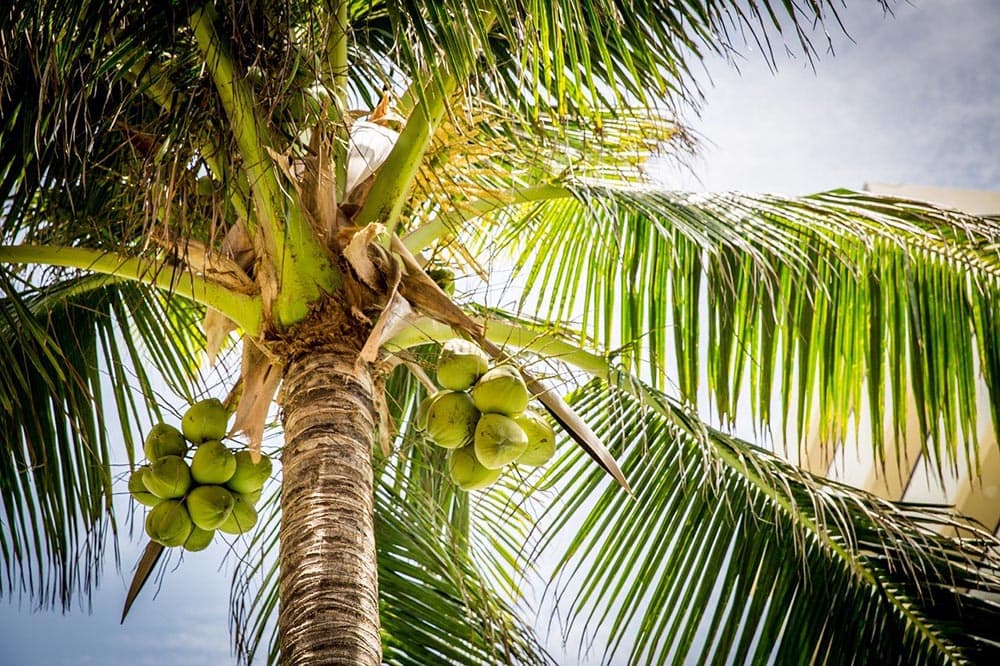
Almost everyone has tasted a coconut or at least seen it on TV. The name “coconut” comes from the Portuguese word “cocoa”, which means shell. This is probably the reason it shares a name with the cocoa plant that has a hard outer shell.
The coconut tree can grow up to 100 feet, making it one of the tallest palms in Florida, yet people can still afford to grow them indoors.
The cocoa palm has large fronds stretching up to 6 feet long. The old palm fronds break away to leave a smooth trunk. It is usually slightly curved and a bit enlarged at the base. The crown contains 25 to 30 pinnates.
Coconuts mature after 4 to 6 years producing sweet-smelling flowers in the spring. The coconuts are well known, with a single tree producing 30 fruits a year on average, but extremely tall palms can produce up to 75 coconuts.
3. Mexican Palm/Mexican Fan Palm (Washingtonia robusta)

The Mexican palm tree is a fast-growing species native to the Baja California peninsula and a small part of Sonora in Northwestern Mexico. It is quite adaptive and has been naturalized in Florida, Texas, Hawaii, Europe, Israel, Lebanon, and Réunion.
It has easy naturalization because it is cold-hardy, salt-tolerant, and ideal for the coastal landscape of Florida.
It has a narrow trunk yet grows very tall and is susceptible to breaking hence not well suited for growing next to the house. The trunk is only 2 feet diameter, making it a hazard during hurricanes in Florida because it breaks easily.
The tree can grow up to 80 feet long and has a spherical blue-black drupe fruit that’s edible but thin fleshed. Its top features a crown 3 to 5 feet fan-shaped with an attractive red stripe on the underside with yellow flowers.
4. California Fan Palm/Desert Fan Palm (Washingtonia filifera)

The California fan palm is native to the southwestern United States and Baja California. Closely related to the Mexican fan palm is the California fan palm and may confuse some, especially when young, but the differences are noticeable when matured.
While the Mexican palms are tall and slender, the Californians are shorter and thicker. Mexicans have fronds shiny with a deep green color while California fan palms have fronds deeply divided with a more dull appearance.
Washingtonia filfera is hardier than the Washingtonia robusta, preferring drier climates to wet. The tree can easily grow, and bird droppings can even disperse the seed. It grows to 59 feet with 13 feet fronds.
The Washingtonian palm species have a large, dense skirt of leaves that blow off, leaving a bare, ringed, gray trunk.
5. Carpentaria Palm (Carpentaria acuminata)

A carpentaria palm is a mid-sized palm tree native to Australia native. Its trunk can grow to 12 inches in diameter and 65 feet in height in the garden. It has pinnate leaves 10 feet to 15 feet long. In its natural habitat, the carpentaria palm can reach a height of 100 feet in diameter with fast-growing natural, elegant foliage.
The palm has bright red fruit that attracts bats in the suburban landscape. But the flower produces a juice that causes skin irritation. Because of its beauty and fast-growing nature, it was once highly recommended to replace Christmas palms.
However, the yellowing disease is lethal to the species and is susceptible to truck cracks. The rich soil in Florida helped it become the fastest-growing species of palms in the state.
6. Canary Island Date Palm (Phoenix canariensis)

The canary palm is a species of flowering palm native to the Canary Islands. A mature tree has a pineapple-like thick trunk with a 30 feet diameter with ferns that come out.
A mature fern can grow up to 65 feet high with a 40 feet spread. The palm tree is slow-growing and can take 15 years to grow to 10 feet.
It has dark green pinnate leaves that grow to 20 feet and form a crown of 20 to 30 leaflets. It has sharp spines at the base of the fronds.
The palm produces ornamental but edible yellow to orange dates in the summer. It is often planted for palm syrup outside Florida.
8. Date Palm (Phoenix dactylifera)
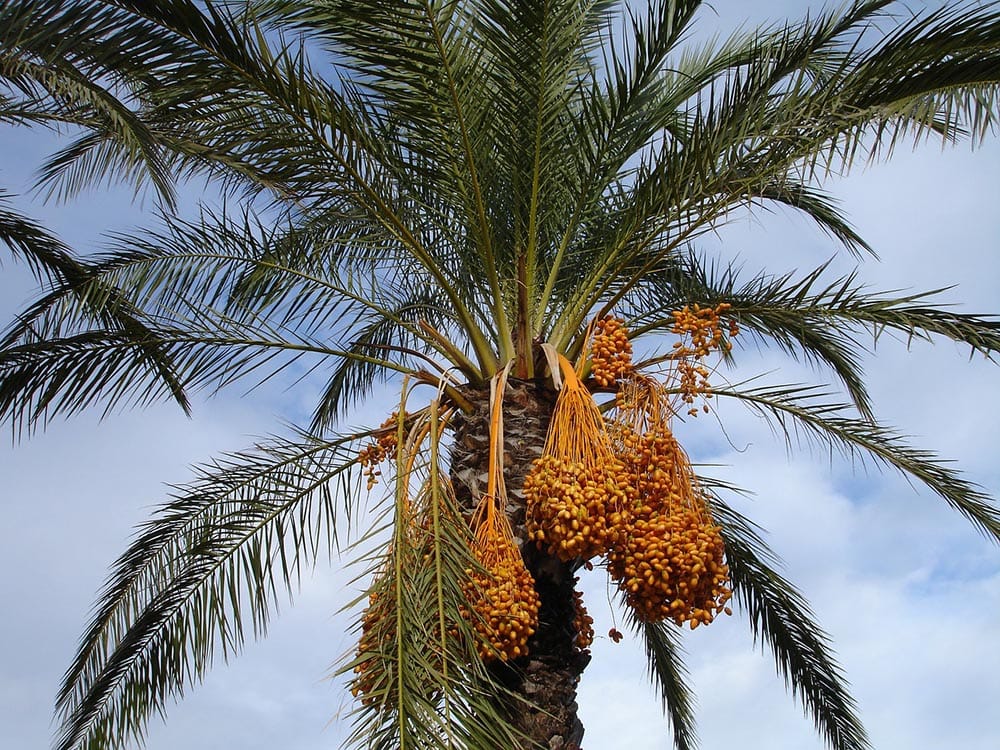
Date palm is a dioecious, flowering palm that requires male and female plants to produce dates. The tree is common in the Florida landscape, but the fruits that grow on the dates become moldy and decay before they mature in the rainy season.
The warm tropical and subtropical temperatures in Florida are suitable for the palm’s pollination and growth all year round.
The sweet fruit-producing date palm needs room to grow the adventitious surface roots that support the plant and assist it in gathering the surface water. It has a long lifespan and can grow up to 100 years, as it is common in North Africa, where the date palm is native and loved for its sweet dates.
Its dried fruits are 50% sugar by weight and about 2% each of protein, fat, and mineral matter. The fruits have a long shelf life and are loved by many.
9. Foxtail Palm (Wodyetia bifurcata)
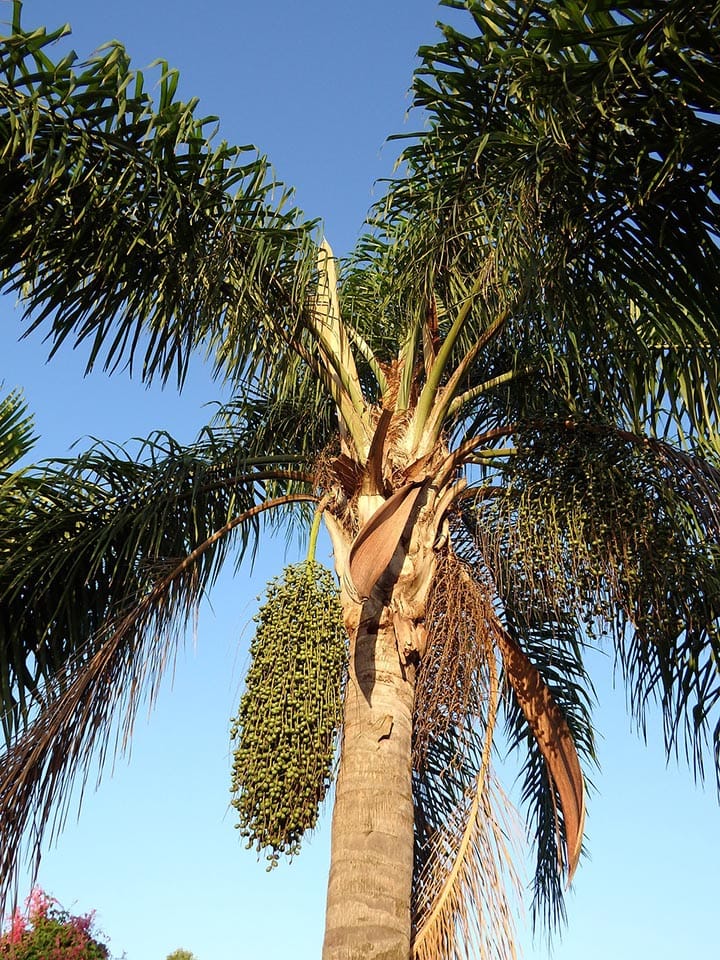
Foxtail palm is named for its foliage that resembles a foxtail and is native to Australia. It has a flowering stalk that rises from the base of the crown shaft.
The foliage varies from deep green to light green and its iconic foxtail-shaped foliage. It is mainly grown as an ornamental tree but has some olive fruits that turn orange when ripe. The tree has a smooth, thin, self-cleaning trunk and a slightly swollen base.
10. Bismarck Palm (Bismarckia nobilis)
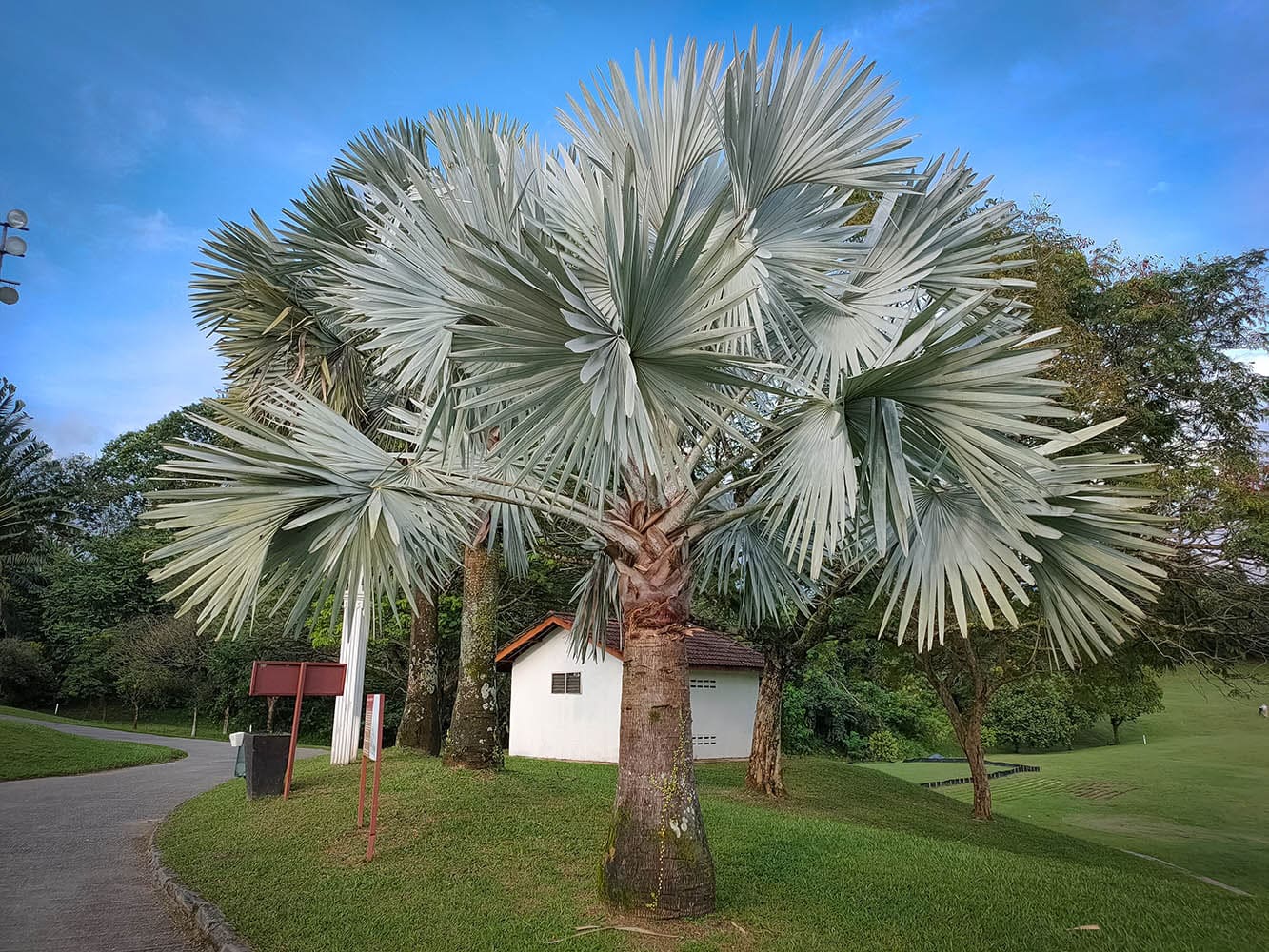
The Bismarck palm is named after the former German chancellor Otto von Bismark. The palm tree is native to Madagascar but grows well in southern Florida, where the soil is wet and well-drained.
It is relatively short and can reach a height of 40 feet with a diameter of 18 inches. Despite its native warm temperature, it can tolerate low temperatures up to 15° Fahrenheit once it is established.
11. Majestic Palm (Ravenea rivularis)
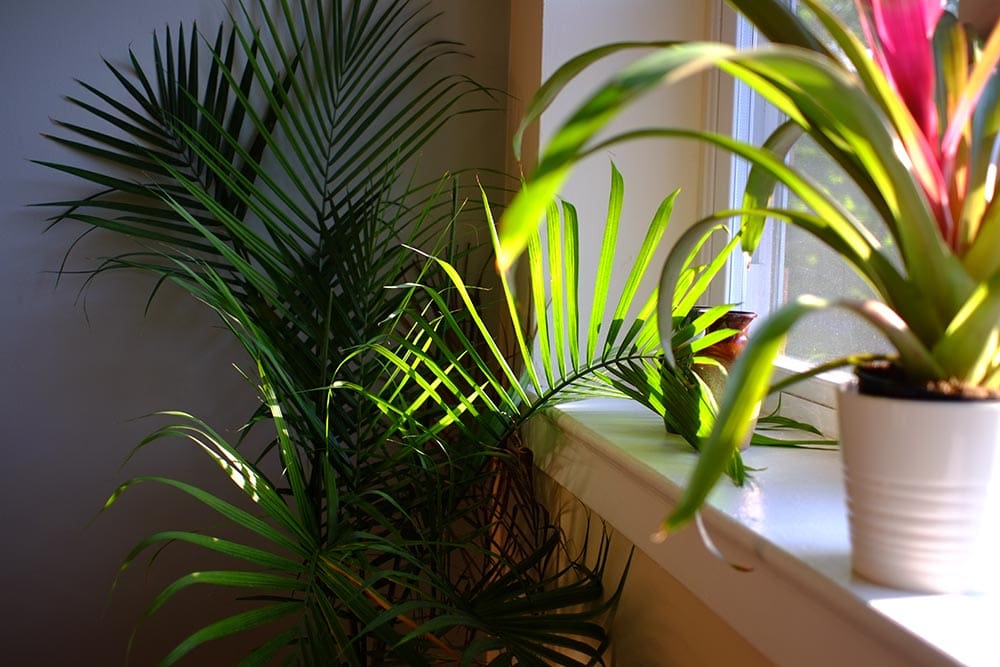
The majestic palm has garnered a reputation as a great house plant since it was introduced in Florida in 1990. Its attractive front has varying shades of green, and it grows slowly, making it suitable for growing indoors.
The palm is easy to spot with its upward arching leaves divided into long thin fingers. Despite the plant’s popularity indoors, it is an endangered palm, with a 2010 survey indicating less than 900 plants in the wild.
See Also: How To Make Potting Soil for Majesty Palms
12. Chinese Fan Palm (Livistona chinensis)
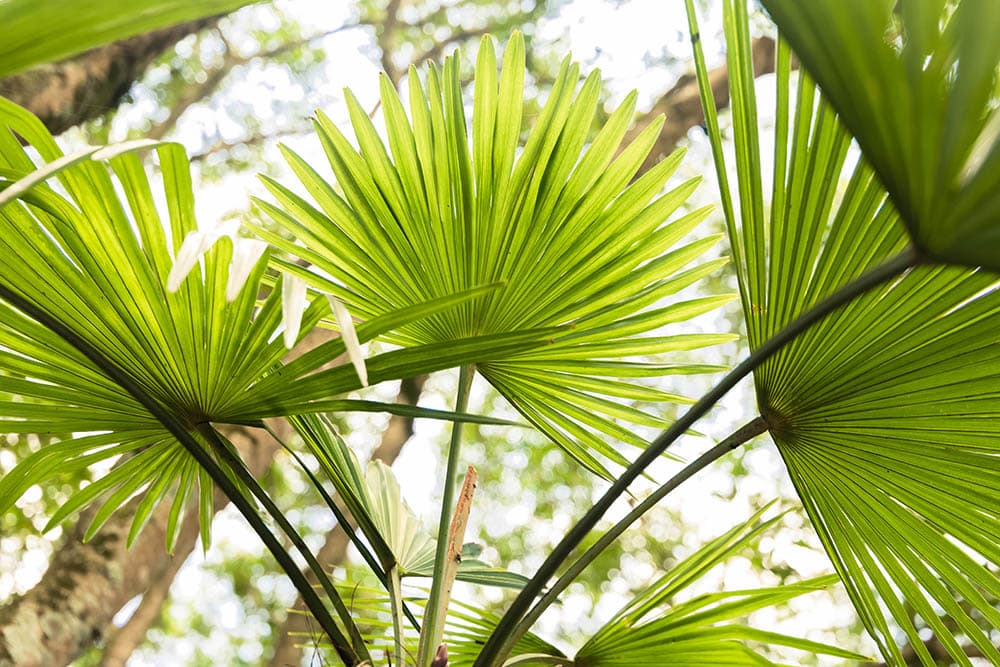
The Chinese fan palm is a subtropical palm species native to China, Taiwan, and Japan that has naturalized in Florida. Like the majestic palm, it makes a great potted house plant, making it popular among those without space in their garden for larger species.
The tree gets its name from the surrounding fan-shaped leaves that droop from the crown. It is a hardy species that grows slowly to reach a height of 50 feet. Chinese fan palms are often bluish-green and, when mature, produce yellow blooms that develop into blue-green or black fruits.
13. Açaí Palm (Euterpe oleracea)
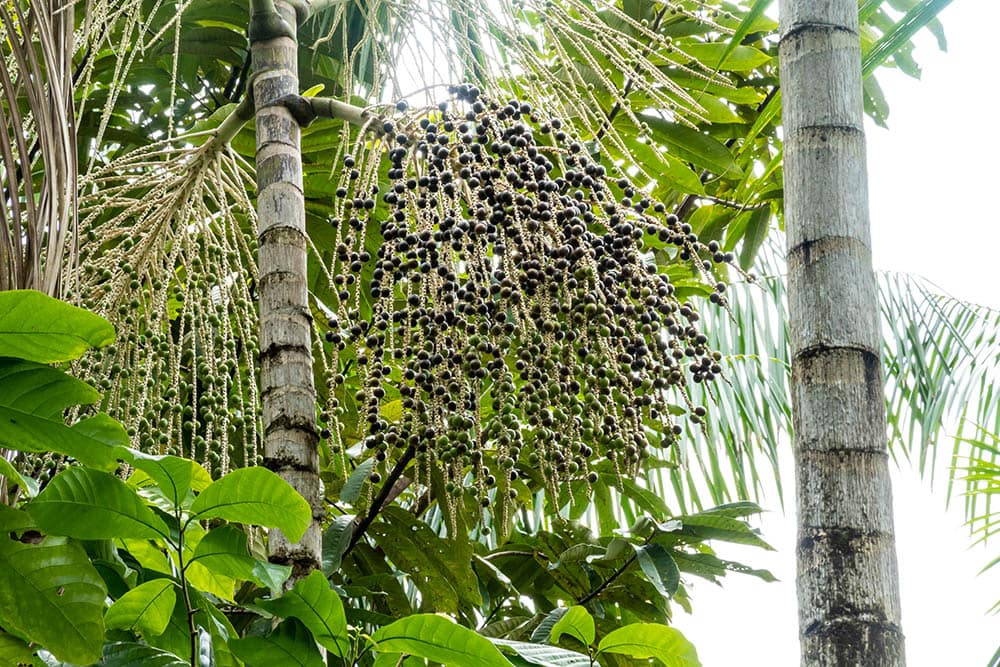
Açaí palms are native to tropical climates and rain forests, but some mature species are located within as far as north as Tampa. This palm is specifically cultivated for its fruits, the açaí berries, hearts of palm, leaves, and the trunk wood. It grows to a height of 82 feet.
The popularity of the fruit has exploded and increased the cultivation of açaí palms in Florida in the typical sandy soils similar to its native Eastern Amazonia habitat, which is mainly swamps and flood plains.
14. Paurotis Palm/Everglades Palm (Acoelorrhaphe wrightii)
The purotis palm grows in clusters with dense stands, slim trunks, and fan leaves. The everglades palm grows in the swamps of South Florida.
It is suited for sandy soil and can grow up to 30 feet when mature. It is a flowering plant producing small, light green, or white flowers that grow into a tiny, red-orange fruit when ripe.
15. Queen Palm (Syagrus romanzoffiana)
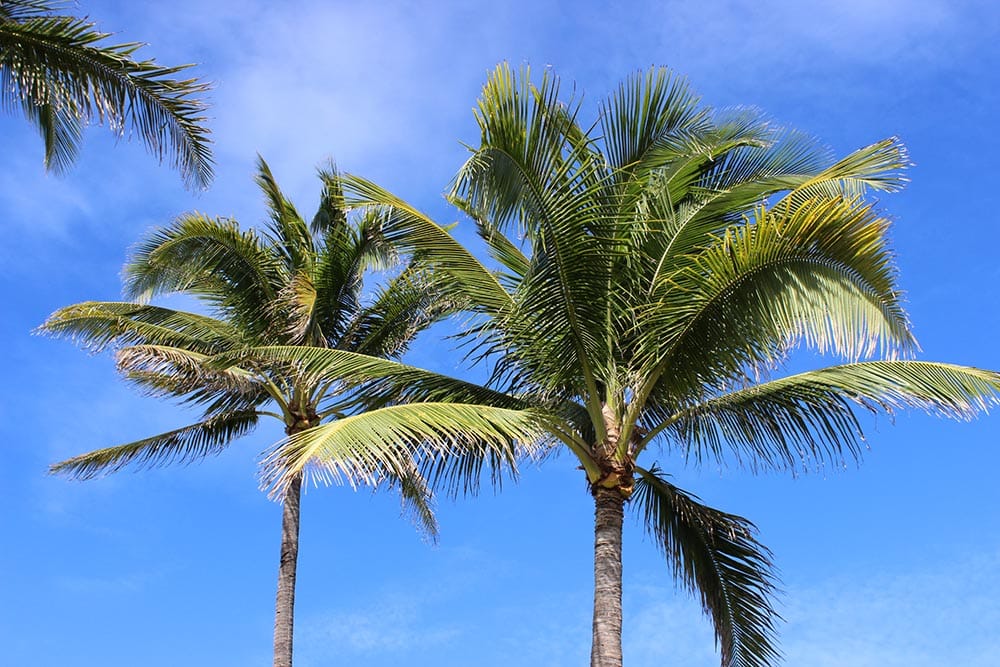
The queen palm is native to South America but is widely grown in Florida due to the species’ fast growth, elegant stature, and wide availability. It is medium-sized and can grow up to 49 feet tall.
It’s one of the most popular feather-leaved palms due to its graceful arching leaves. Queen palms are hardy, moderately salt-tolerant with a trunk diameter of up to 15 inches. The palms feature large inflorescences of cream-colored flowers produced during spring and summer.
The flowers produce bright orange round fruit. Queen palms fruit clusters can weigh up to 100 pounds and contain over a thousand seeds that may sprout into unwanted seedlings.
16. Pindo Palm/Jelly Palm (Butia capitata)
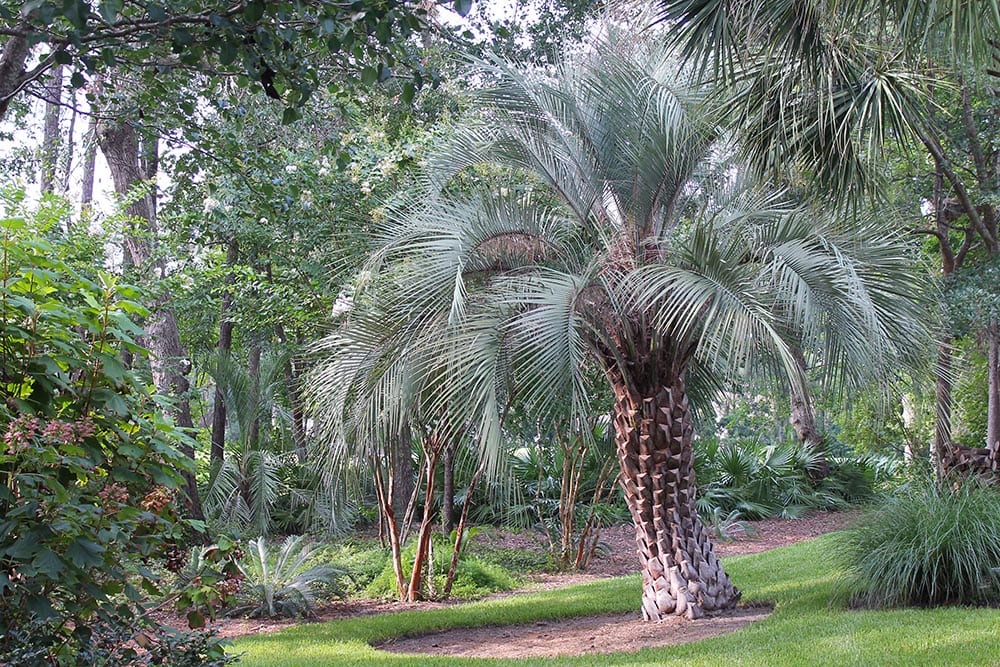
The pindo palm is a small, slow-growing palm native to Brazil but naturalized in Florida. The palm tree is gray with an exceptionally thick trunk with a diameter of 1.5 feet and grows to 25 feet tall. Its heavy trunk is patterned with the stubs of old leaves resembling a pineapple. The tree has monoecious flowers found on different parts of the same palm.
It produces white, yellow, and orange flowers that form the male and female clusters of the flowers. Pindo palms produce round orange or brown fruits used to make jelly. The leaves are three feet long, feather-shaped, pale-yellowish, and attached to the crown at 45° angles.
The plant is drought-resistant with no known illnesses making it a perfect choice for gardeners in Florida.
17. Windmill Palm (Trachycarpus fortunei)
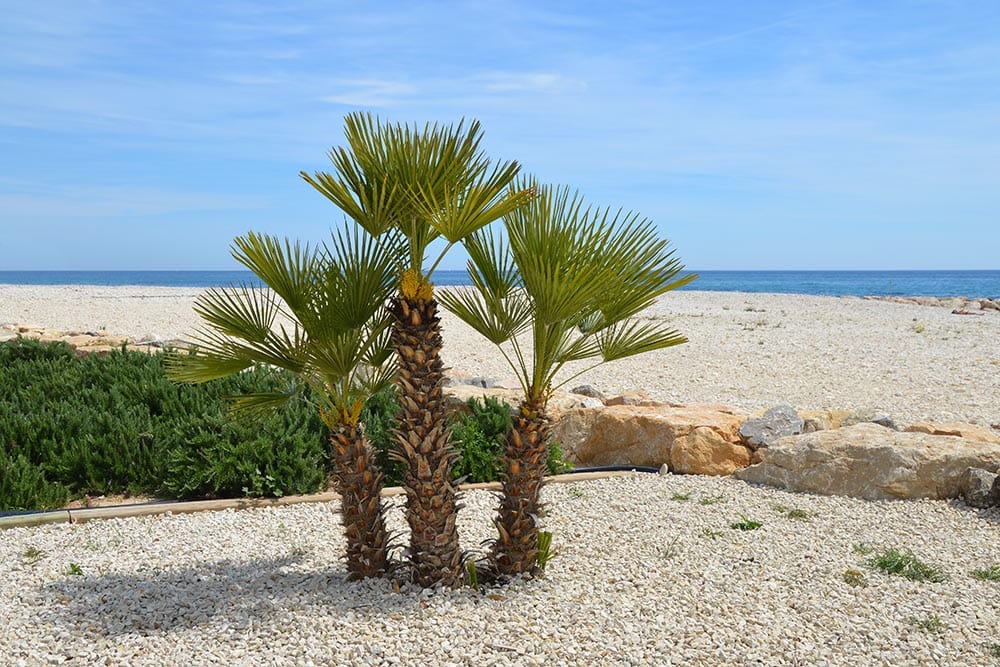
The windmill palm is a hardy, slow-growing, evergreen palm from South Asia. The palm can grow up to 20 feet tall with a rough, slim trunk that measures 12 inches. It has long fan-shaped leaves that may either droop or be straight.
It also has monoecious trees that can either be male or female. The palm produces a small yellow kidney-shaped fruit that turns blue-black on ripening in the fall.
18. Bottle Palm (Hyophorbe lagenicaulis)
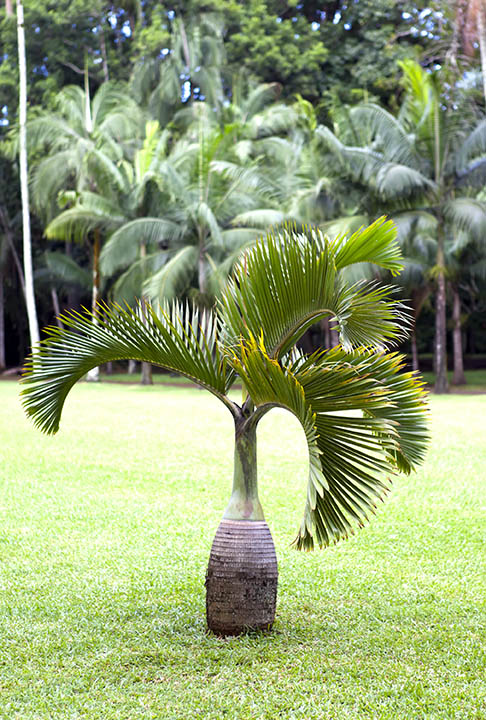
The bottle palm is a flowering palm native to Mauritius that only grows in Florida and Hawaii in the entire US. It grows to 10 feet and has a thick short, bottle-like trunk that looks swollen at the base. Its short height makes it perfect as an indoor plant. The bottle palm produces white flowers that turn to long blackberries once ripe.
Conclusion
Florida has a lot of plant diversity, and perhaps one of the most diverse plant species in the state is the palms. The ideal climate and the well-drained soils have made it hospitable to palm species not found elsewhere in the country. Different palms are grown for landscaping, food and medicine, with most palms performing better in South Florida. Any of these palms with make a wonderful addition to your home or garden.
- See Also: 27 Types of Trees in Florida
Featured Image Credit: Pixabay
Contents

